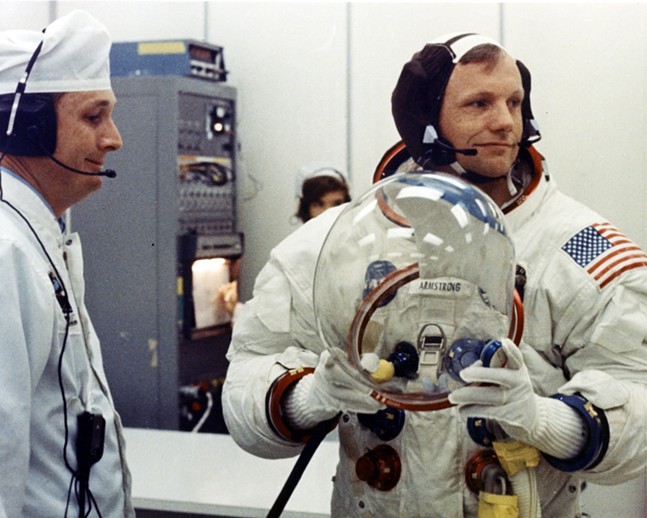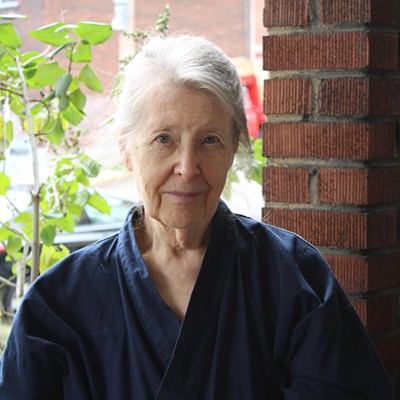This year marks the 50th anniversary of Apollo 11, the NASA mission that allowed the first man to walk on the moon. A new documentary, Armstrong, commemorates the feat with the story of Neil Armstrong, the astronaut who first stepped foot on the moon’s surface. Using archival footage, interviews with colleagues and family, and never-before-seen home movies, as well as Armstrong’s own words read aloud by Harrison Ford, the film lays out the life and career of a quiet, humble man who became one of the most recognizable names in America.
The film begins with the Apollo 11 preparing for launch, with crowds of fans and family members watching from the ground, before going back to his upbringing in the quiet farm town of Wapakoneta, Ohio. He grew up loving planes, deciding to get into aviation at a young age, and got his pilot’s license before he got his driver’s license. He eventually became a fighter pilot in the Korean War. Armstrong’s former commanding officer describes Armstrong’s personality in the Navy as “quiet and poised.” A former fighter pilot describes him as “unusually quiet” and “reserved.” After the war, he meets his wife Janet, who says of him, “He didn’t like to talk about much, and he never did talk about much, but what he did say seemed to be meaningful.”
Though it doesn’t offer much in the way of juicy documentary fodder, Armstrong’s demure personality was one of the explicit reasons why he was chosen to walk on the moon first, as opposed to his crewmates Buzz Aldrin and Michael Collins. NASA was not only choosing someone who was a qualified astronaut, but someone who could function as a kind of spokesperson for the program after the flight, since they knew whoever walked on the moon would become a globally recognizable figure. In explaining why he chose Armstrong to walk on the moon first, the NASA flight operations director says he felt Aldrin “wouldn’t be the best representative,” likely due to his more turbulent personal life. Armstrong, on the other hand, did everything correctly post-Apollo, with his only flaw, according to media at the time, being that he wasn’t available enough. He’d moved his family back to Ohio to get away from all the attention.
Because the movie takes the angle of celebrating Armstrong, the moon landing, the space program, and because its release is in correlation with the 50th anniversary, Armstrong doesn’t step into more nuanced waters. It’s a cut-and-dry biography of the astronaut, fit for any space fan or science classroom. There is only briefly a reminder that the moon landing was conceived as a means of besting the U.S.S.R. in the Space Race, and that dangerous shortcuts were taken to get there faster. The swelling music and tense scenes surrounding the moon landing do evoke deep and real emotions, but it’s also a manipulative type of patriotism that enforces American exceptionalism. There is a lot of talk in the documentary of this being a big step for all of mankind, but it was the American flag that they planted. It would not be out of character for the current president to suggest a flashy, dangerous mission with the goal of proving his country to be number one.
Even so, there is something powerful about watching the lead-up to the moon landing, and reminiscing about a time when millions of people came together to watch the same thing on live TV. It still happens occasionally, with sports or award shows, but not with the same fervor, and not with the same awe at watching something that had never been done before.
Armstrong opens Fri., July 12 at Harris Theater.














